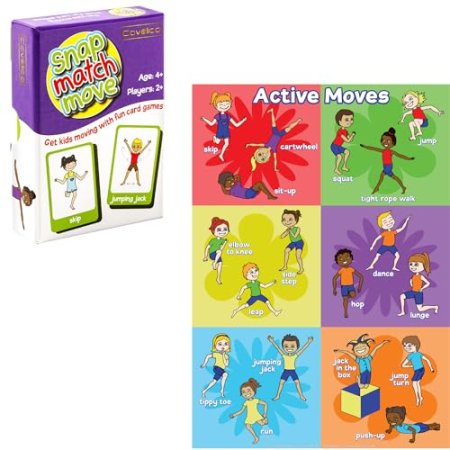Introduction to Fitness Planners
What Are Fitness Planners?
Fitness planners are tools designed to help individuals track their workout routines, nutrition, and overall progress towards their fitness goals. They come in various formats, including digital apps and paper notebooks, and serve as a personalized guide to improving health and achieving specific fitness objectives.
Importance of Fitness Planners in Achieving Goals
Fitness planners play a crucial role in reaching fitness goals by providing a structured approach to tracking progress and making adjustments. They help users stay organized, maintain motivation, and ensure that their efforts are aligned with their goals.
Types of Fitness Planners Available
Fitness planners are available in different forms, each catering to various needs. From sleek digital apps that sync with other fitness tools to detailed paper planners with space for notes and reflections, there’s a fitness planner out there for everyone.
Benefits of Using a Fitness Planner
Tracking Progress and Goals
One of the primary benefits of a fitness planner is the ability to track progress over time. By logging workouts, nutrition, and other metrics, you can see how well you’re doing and where improvements are needed.
Enhancing Motivation and Accountability
Fitness planners enhance motivation by setting clear goals and tracking achievements. Knowing that you have a record of your progress can keep you accountable and driven to continue working towards your objectives.
Customizing Workouts and Nutrition
A fitness planner allows you to tailor workouts and nutrition plans to your specific needs. You can experiment with different routines, track what works best for you, and make necessary adjustments to optimize results.
Identifying and Overcoming Challenges
By regularly reviewing your entries, you can identify patterns and challenges that may be hindering your progress. This insight allows you to address obstacles and make informed changes to your fitness routine.
Key Features to Look for in a Fitness Planner
Layout and Design
The layout and design of a fitness planner should be user-friendly and visually appealing. Look for planners that offer clear sections for workouts, nutrition, and notes, and have a design that suits your style and preferences.
Tracking Metrics
Effective fitness planners include sections for tracking various metrics such as workout duration, intensity, calories burned, and nutritional intake. The ability to monitor these metrics helps you stay on top of your goals.
Integration with Other Tools
Some fitness planners offer integration with other fitness tools and apps. This feature allows for seamless syncing of data, providing a comprehensive view of your progress across different platforms.
Customization Options
Customization options enable you to tailor the planner to your specific needs. Whether it’s adding personal goals, adjusting the layout, or including additional sections, a customizable planner can better serve your individual requirements.
How to Use a Fitness Planner Effectively
Setting Up Your Planner
Start by setting up your fitness planner with your personal information and goals. Outline your fitness objectives, preferred workouts, and dietary preferences to create a personalized plan.
Daily and Weekly Entries
Make it a habit to record your daily and weekly activities. Consistent entries provide a clearer picture of your progress and help you stay focused on your goals.
Reviewing and Adjusting Goals
Regularly review your progress and adjust your goals as needed. If you find certain areas need more attention or if you’re surpassing your expectations, update your planner to reflect these changes.
Incorporating Feedback and Insights
Use the insights gained from tracking to make informed decisions about your fitness routine. Incorporate feedback from your experiences to enhance your workouts and nutrition.
Fitness Planner Formats and Styles
Digital Fitness Planners
Digital fitness planners offer convenience and flexibility with features such as syncing with other apps, setting reminders, and accessing data from multiple devices. They are ideal for tech-savvy users who prefer a digital approach.
Paper-Based Fitness Planners
Paper-based fitness planners provide a tactile, hands-on approach to tracking. They are perfect for those who enjoy writing things down and prefer a physical record of their progress.
Hybrid Planners
Hybrid planners combine elements of both digital and paper formats. They may offer digital features alongside traditional paper sections, catering to users who like a mix of both worlds.
Choosing the Right Fitness Planner for Your Needs
Assessing Your Fitness Goals
Evaluate your fitness goals to determine the type of planner that best suits your needs. Consider whether you need detailed tracking, simple logs, or integration with other tools.
Budget and Preferences
Fitness planners come in various price ranges. Decide on your budget and look for a planner that offers the features you need within your price range.
Comparing Features and Functionality
Compare the features and functionality of different planners. Look for aspects like tracking capabilities, design, and customization options to find the best fit for your requirements.
Reading Reviews and Recommendations
Check reviews and recommendations from other users to gauge the effectiveness of different planners. This feedback can provide valuable insights and help you make an informed choice.
Common Mistakes to Avoid with Fitness Planners
Overcomplicating Your Planner
Avoid making your planner too complex. Keep it simple and user-friendly to ensure you stick with it and find it easy to use.
Ignoring Progress and Feedback
Don’t ignore the feedback and progress recorded in your planner. Use this information to make necessary adjustments and stay on track with your goals.
Failing to Set Realistic Goals
Set realistic and achievable goals to avoid frustration. Break down larger goals into smaller, manageable steps to maintain motivation and track progress effectively.
Neglecting Consistency
Consistency is key to achieving fitness goals. Make a habit of using your planner regularly to stay committed and make the most of your efforts.
Success Stories and Testimonials
Real-Life Examples of Fitness Planner Success
Many individuals have achieved significant improvements in their fitness journeys by using planners. These success stories highlight the effectiveness of tracking progress and setting goals.
How Fitness Planners Have Transformed Lives
Fitness planners have transformed lives by providing structure, motivation, and accountability. They help users make informed decisions and achieve their fitness aspirations.
Tips from Users and Experts
Learn from the experiences of other users and fitness experts. Their tips and advice can offer valuable insights into how to maximize the benefits of your fitness planner.
Maintaining Motivation with Your Fitness Planner
Setting Milestones and Rewards
Set milestones and reward yourself for achieving them. This approach helps maintain motivation and encourages continued progress towards your goals.
Staying Consistent and Committed
Consistency is crucial for success. Use your planner regularly to stay committed to your fitness routine and track your progress over time.
Finding Support and Encouragement
Seek support and encouragement from friends, family, or fitness communities. Sharing your goals and progress with others can boost motivation and provide additional accountability.
Conclusion
Summary of Key Points
Fitness planners are valuable tools for tracking progress, setting goals, and staying motivated. By choosing the right planner and using it effectively, you can enhance your fitness journey and achieve your desired outcomes.
Final Recommendations for Choosing and Using a Fitness Planner
Select a fitness planner that aligns with your goals, preferences, and budget. Use it consistently to track your progress, make adjustments, and stay motivated throughout your fitness journey.
Frequently Asked Questions (FAQs)
How Do I Start Using a Fitness Planner?
Begin by setting up your planner with your fitness goals, preferred workouts, and nutrition plans. Make daily and weekly entries to track your progress and stay on track.
What Features Should I Look for in a Fitness Planner?
Look for features such as tracking metrics, customization options, and integration with other tools. Choose a planner that suits your needs and preferences.
Can a Fitness Planner Help with Weight Loss?
Yes, a fitness planner can aid in weight loss by helping you track your workouts, nutrition, and progress. Combining it with a healthy diet and consistent exercise will enhance your results.
How Often Should I Update My Fitness Planner?
Update your fitness planner regularly, ideally daily or weekly. Consistent updates provide a clearer picture of your progress and help you make necessary adjustments.
Are Digital Fitness Planners Better Than Paper Ones?
Digital fitness planners offer convenience and additional features, while paper planners provide a tactile experience. The choice depends on your preferences and how you plan to use the planner.
Feel free to review and let me know if you need any further adjustments or additional details!


























